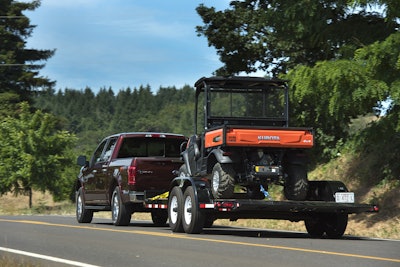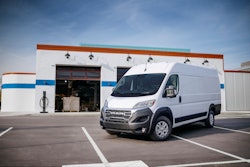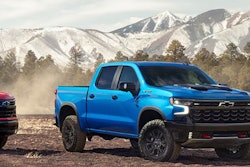
We back up to the trailer, crank the jack down until the ball seats in the trailer tongue, make the proper trailer connections, and head out on our merry way.
Yesterday I was doing my towing and fuel economy testing with a 2015 Ford F-150 Lariat 4×4 Super Crew with the 3.5L EcoBoost. A fine package.
My test trailer: a Landoll LT1220, a very nice tandem-axle tilt-deck that weights 3,200 pounds. I loaded a Kubota RTV 1120D utility side-by-side on it to bring the towed weight to 5,300 pounds.
This F-150 has a maximum tow rating of 10,700 pounds according to Ford’s 2015 Towing Guide. But they recommend a weight-distributing hitch on trailered weights exceeding 5,000 pounds. My trailer was about the weight of an Alabama football team’s lineman over that amount. No big deal.
I checked the Weigh-Safe hitch to see tongue weight: 500 pounds. That’s close enough to the minimum 10-percent of trailered weight Ford recommends as well.
And the trailer was slightly down in the front, but not anything excessive. So, off I went.
Ten miles later I eased over and stop along the highway because the truck and trailer feels a little light and loose driving along the winding country roads and on the interstate.
A few minutes later I was back on the road, towing stability instilling confidence in this truck’s ability to get the job done.
 Taking an extra couple minutes to fine-tune the trailer setup with the tow vehicle makes a huge difference in handling.
Taking an extra couple minutes to fine-tune the trailer setup with the tow vehicle makes a huge difference in handling.Here’re the two simple adjustments I made – and ones I should have taken the time to do when first hooking up the trailer:
1) Moved the Kubota about a foot farther forward to bring the tongue weight, as shown on the built-in Weigh-Safe scale, to 650 pounds, or about 12% of the towed weight.
2) Then I raised the Weigh-Safe hitch ball up two holes so the trailer and F-150 frames were close to being parallel (trailer still had a slight tongue-down attitude.)
Those two little adjustments make a huge difference when towing with any midsize of 1/2-ton pickup.
Granted, by Ford’s towing recommendations, this weight trailer should have had a W-D hitch being used instead of just towing on the factory hitch. But most of you reading this aren’t going to invest neither time nor money in a W-D hitch setup.
But you probably will take the time to fine-tune the trailer setup like I did. And if you do, I can guaranty the difference in the way your work truck feels towing will be worth those extra couple minutes.
Fine-tuning the trailer setup sure made a difference in how the 2015 F-150 I’m road testing this week handled the load.








